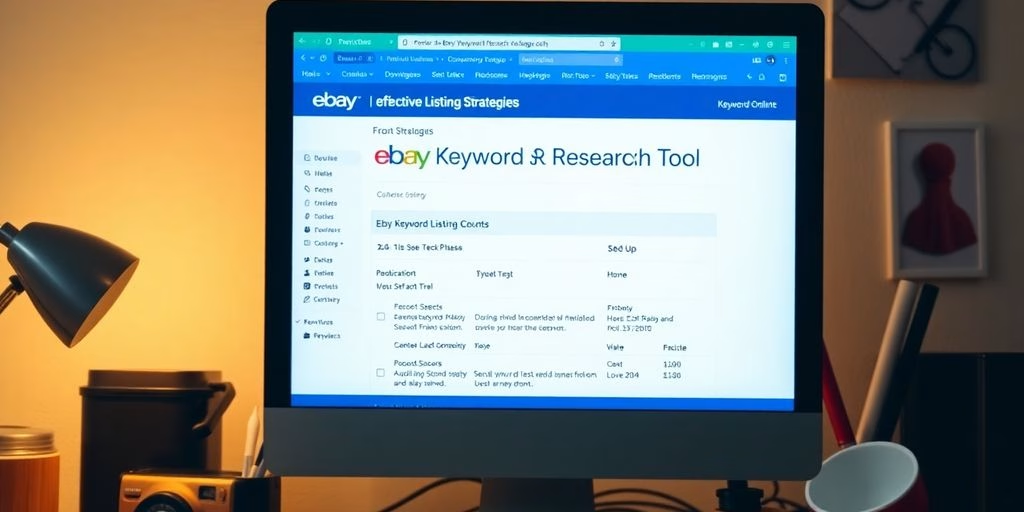In the realm of strategic management, SWOT analysis stands as a cornerstone, providing businesses with a clear framework to evaluate their competitive position and chart a course for future growth. This comprehensive guide to mastering SWOT analysis will delve into the intricacies of the tool, exploring its definition, purpose, and application in strategic decision-making. Through real-world examples and best practices, we aim to equip you with the knowledge to effectively implement SWOT analysis and gain practical insights into the dynamics of the business world.
Table of Contents
ToggleKey Takeaways
- SWOT analysis is an essential strategic tool that helps organizations identify internal strengths and weaknesses, as well as external opportunities and threats, to inform decision-making.
- The analysis facilitates the alignment of an organization’s resources and capabilities with the external environment, enhancing competitive advantage and goal achievement.
- Real-world applications of SWOT analysis provide learners with valuable insights into business strategy evaluation, risk mitigation, and the identification of competitive advantages.
- Regularly updating and revisiting SWOT analysis is crucial for maintaining its relevance and ensuring that business strategies are aligned with changing market dynamics for sustained success.
- The guide offers a structured approach to conducting a SWOT analysis, including case studies and best practices, to help businesses navigate the complexities of the strategic landscape.
Deciphering the SWOT Code

The Anatomy of SWOT: Dissecting the Four Quadrants
At the heart of any strategic conquest lies the SWOT analysis, a tool that dissects the business battlefield into four distinct quadrants. Each quadrant is a piece of the puzzle, revealing insights that are crucial for strategic planning. The SWOT Matrix, a simple yet profound grid, captures the essence of this analysis.
- Strengths: These are the internal attributes that give your business an edge over competitors. Think of them as your secret weapons or superpowers.
- Weaknesses: The Achilles’ heel of your organization, these internal factors can hold you back if not addressed.
- Opportunities: External conditions ripe for exploitation, these are the windfalls you must be agile enough to capture.
- Threats: External challenges that lurk in the shadows, ready to pounce on any vulnerability.
By populating each quadrant with the relevant factors, a SWOT Matrix transforms abstract concepts into a visual strategic compass. This visual representation aids decision-makers in navigating the complex terrain of business strategy.
Creating a SWOT Matrix is akin to drawing a map of your competitive landscape. Label the top row as ‘Internal Factors’ and ‘External Factors’, and the left column as ‘Strengths’ and ‘Weaknesses’. The resulting quadrants represent the core areas of focus for any strategic endeavor.
Applying SWOT in Real-World Scenarios
In the grand chessboard of business, SWOT analysis is the power move that can checkmate competition. It’s the strategic whisper in the ear of decision-makers, guiding them through the labyrinth of market dynamics. Let’s take a peek at how this plays out in the trenches of commerce.
- Example 1: XYZ Tech Inc.
- Strengths: Cutting-edge technology, innovative R&D team
- Weaknesses: High employee turnover, limited emerging market presence
- Opportunities: Surging product demand, new market frontiers
- Threats: Fierce competition, potential disruptive innovations
In the case of XYZ Tech Inc., a SWOT analysis illuminated the path to competitive advantages and highlighted the quicksand of potential risks. By aligning their strengths with the pulsating opportunities of growing demand and untapped markets, they could craft a strategy to outmaneuver threats and weaknesses.
The essence of strategy lies in creating conditions for victory before the battle begins. A well-executed SWOT analysis does just that, serving as a compass that points businesses towards success, while steering clear of pitfalls.
As the business landscape evolves, so must the strategies. Regular SWOT reviews ensure that the company’s approach adapts to the shifting sands of market conditions, maintaining relevance and effectiveness. After all, a strategy that’s set in stone is more likely to sink than to soar.
Translating SWOT Insights into Strategic Moves
Armed with the fourfold map of SWOT, the journey from theory to action is akin to setting sail with a strategic compass in hand. Boldly charting a course through the business seas requires more than just knowledge of the currents; it demands decisive action. Here’s how to hoist the sails:
- Identify the most pressing strengths and weaknesses within your organization.
- Match these internal factors with external opportunities and threats to uncover strategic options.
- Prioritize the options based on feasibility, impact, and alignment with long-term goals.
- Develop a detailed action plan, assigning resources and setting timelines.
In the realm of strategy, action is the bridge between the possible and the achieved.
Remember, a SWOT analysis is not a one-time voyage but a continuous quest for strategic treasure. It’s about adjusting the sails as you navigate through the ever-changing business climate, ensuring that your ship remains on course towards success.
The SWOT Symphony

Conducting the Internal Audit: Identifying Strengths and Weaknesses
Embarking on the internal audit journey of a SWOT analysis is akin to a deep-sea dive into the murky waters of your organization’s soul. It’s where you’ll uncover the glittering treasures of Strengths that set you apart from the competition—be it a skilled workforce, a sterling brand reputation, or cutting-edge technology. But beware, for you might also stumble upon the lurking Weaknesses, those internal shortcomings that gnaw at your competitive edge like outdated systems or inefficient processes.
- Strengths: Your arsenal of competitive tools. These are the internal attributes that contribute positively to your organization’s success.
- Weaknesses: The Achilles’ heel of your enterprise. Identifying these is crucial as they can expose your business to risks and hinder performance.
In an internal audit, traditionally, a SWOT analysis is performed to measure the strengths, weaknesses, opportunities, and threats faced by the entity.
While strengths propel you forward, weaknesses, if left unchecked, can drag you down faster than a broken anchor. It’s essential to confront these areas of improvement head-on, drawing insights from customer feedback and analytical data. Only then can you chart a course for improvement and innovation, turning potential vulnerabilities into fortified bulwarks of your business strategy.
Scouting the Horizon: Pinpointing Opportunities and Threats
In the grand chessboard of business, scouting the horizon is not just about spotting the next move; it’s about discerning the subtle shifts that signal opportunities and threats. Opportunities are the golden tickets to innovation and market expansion, often arising from consumer behavior changes or technological breakthroughs. Conversely, threats lurk in the shadows of competition, economic shifts, and regulatory upheavals.
To navigate this terrain, one must be vigilant and versatile, ready to pivot with the winds of change.
Identifying opportunities and threats is akin to reading the tea leaves of the market; it requires a keen eye and a strategic mind. Here’s a simple guide to ensure you don’t miss the forest for the trees:
- Assess the market trends and consumer preferences to uncover hidden opportunities.
- Keep a watchful eye on the competition and industry changes to anticipate potential threats.
- Leverage data and customer feedback to validate your findings.
- Populate your SWOT quadrant with these insights, ensuring a balanced view of the business landscape.
Creating a Masterpiece: Aligning Resources with Market Realities
In the grand theater of business, aligning resources with market realities is akin to a maestro conducting an orchestra; every section must be in harmony to create a symphony of success. Strategically leverage unique features to ensure your business not only sings but soars above the competition.
- Assess Strengths: Identify what sets your marketing efforts apart, leveraging data to pinpoint areas of excellence.
- Acknowledge Weaknesses: Confront areas of improvement head-on, drawing insights from customer feedback, reviews, and analytical data.
- Uncover Opportunities: Explore avenues for growth and innovation, drawing inspiration from emerging trends and consumer preferences.
- Mitigate Threats: Stay alert to industry changes and competitor moves to anticipate and avoid risks.
In the quest for strategic alignment, it is good to prioritize markets based on their growth potential and alignment with your overall business objectives. This not only streamlines focus but also ensures that resources are channeled where they can generate the most impact. Transform data for customer analysis and predict trends for business growth, turning information into actionable intelligence.
Crafting a Blueprint for Competitive Dominance

Leveraging SWOT for Competitive Advantage
In the grand chessboard of commerce, SWOT analysis is the power play that can checkmate competitors. By identifying competitive advantages, businesses can deploy their resources with precision, turning strengths into market dominance and opportunities into revenue streams. But the game is nuanced; it’s not just about playing your best pieces, but also about predicting your opponent’s moves.
Adaptation to market changes is crucial; a SWOT analysis is akin to a crystal ball, offering foresight into market trends and potential risks. This strategic foresight allows for swift maneuvers that can outpace rivals. Consider the following points to ensure your SWOT analysis is not just a formality but a formidable weapon in your strategic arsenal:
- Be honest and objective in your assessment to avoid biases.
- Prioritize your findings to tackle the most critical issues first.
- Align your organization’s resources and capabilities with the external environment.
Enhanced competitiveness and adaptation are the twin pillars of strategic success. Regularly revisiting your SWOT analysis will keep your strategies sharp and responsive to the ever-changing battlefield of business.
Avoiding Strategic Pitfalls: Risk Mitigation through SWOT Analysis
In the chess game of business, SWOT analysis is your grandmaster move for sidestepping strategic blunders. Mitigate Threats by keeping a hawk’s eye on industry shifts and competitor maneuvers. This vigilance is your shield against unforeseen dangers.
Utilizing SWOT Analysis tools can be a game-changer. Tools like SWOT analysis PowerPoint templates not only simplify the process but also foster teamwork and crystallize insights. Here’s a quick guide to turning SWOT analysis into your strategic talisman:
- Identify internal strengths and weaknesses to build your strategic arsenal.
- Scout for external opportunities and threats—knowledge is power.
- Align your resources with market realities, transforming data into actionable strategies.
- Anticipate and prepare for potential risks, ensuring your strategy is not just a plan, but a dynamic blueprint for success.
Furthermore, opportunities can be leveraged to counterbalance threats. Diversifying offerings or venturing into new markets can fortify your position, making you less vulnerable to market volatilities.
In conclusion, SWOT analysis is not just about mapping the battlefield; it’s about crafting a strategy that’s as resilient as it is robust. By anticipating challenges and preparing for them, you turn potential weaknesses into strengths and threats into opportunities.
The Continuous Improvement Loop: SWOT as a Tool for Ongoing Refinement
The beauty of SWOT analysis lies in its cyclical nature, a veritable carousel of strategic contemplation. It’s not a one-and-done deal; rather, it’s an ongoing dance with the ever-changing rhythms of the market. Regularly revisiting the SWOT matrix ensures that your strategies stay in step with the beat.
- Monitor Market Conditions: Keep an eye on the pulse of the market to spot new opportunities and threats.
- Review Organizational Dynamics: Assess how internal changes might affect your strengths and weaknesses.
- Refine Strategies: Adjust your strategic moves to maintain their effectiveness and relevance.
In the grand theater of business, SWOT analysis is the spotlight that illuminates the path to continuous improvement and refinement.
By treating SWOT as a living document, you create a dynamic framework that not only supports decision-making but also fosters a culture of perpetual strategic enhancement. It’s a tool that, when wielded with finesse, can transform potential pitfalls into stepping stones for success.
Tales of Triumph and Cautionary Tales

Learning from Missteps: SWOT Analysis Blunders
While SWOT Analysis is a strategic linchpin, it’s not immune to missteps. Common SWOT analysis mistakes include a lack of objectivity, which can skew the entire process. It’s akin to wearing rose-colored glasses when examining your strengths and peering through a microscope at your opportunities, while weaknesses and threats lurk in the periphery, overlooked or underestimated.
Misinterpreting data or failing to act on key findings can turn a SWOT analysis into a fruitless exercise, akin to a ship’s captain ignoring the compass and sailing blindly.
Another blunder is treating SWOT as a one-off event rather than a dynamic process. Without regular reviews and updates, a SWOT analysis can quickly become outdated, as irrelevant as last year’s fashion trends in the fast-paced world of business.
Lastly, relying solely on SWOT without integrating other strategic tools is like trying to complete a puzzle with only a quarter of the pieces. It’s essential to blend SWOT with other analyses for a more comprehensive strategy. Here’s a quick list of pitfalls to avoid:
- Overlooking critical factors
- Misinterpreting data
- Focusing too much on strengths and opportunities
- Neglecting regular reviews and updates
- Over-reliance on SWOT for decision-making
Best Practices: Implementing SWOT Analysis Effectively
To wield the strategic compass of SWOT with finesse, one must not only understand its components but also master its application. Effective implementation of SWOT analysis is akin to preparing a gourmet dish; it requires the right ingredients, precise timing, and a touch of creativity. Here’s a recipe for success:
- Start with clarity: Define clear objectives for your SWOT analysis to ensure that every element serves a purpose.
- Gather diverse perspectives: Involve individuals from various departments to obtain a holistic view of the organization.
- Analyze with rigor: Scrutinize each quadrant with equal intensity to avoid bias and uncover hidden insights.
- Prioritize strategically: Not all findings will have the same impact. Prioritize them based on their potential to influence your business goals.
Embrace the dynamic nature of business; a SWOT analysis is not a one-and-done task but a continuous strategic conversation.
Remember, the goal is not just to analyze, but to translate insights into actionable strategies. Whether it’s leveraging your strengths to capitalize on market opportunities or fortifying against potential threats, the key is to align your resources with the evolving business landscape. By doing so, you can navigate the complexities of the market and chart a course towards sustained growth and success.
SWOT Analysis for Sustainable Success

Adapting to Change: The Role of SWOT in Anticipating Market Shifts
In the ever-shifting sands of the market, a SWOT analysis serves as a strategic oasis, offering respite and direction. By identifying emerging opportunities and potential threats, businesses can not only survive but thrive amidst change. The key is not just to adapt, but to adapt wisely.
- Mitigate Threats: Stay alert to industry changes and competitor moves to anticipate and avoid risks.
- Enhanced Competitiveness: Leverage strengths and opportunities to gain a competitive edge.
- Continuous Monitoring: Regularly revisit SWOT to ensure strategies evolve with the business landscape.
The true mastery of SWOT lies in its ability to transform insights into actionable strategies that maximize ROI and ensure sustainable success.
Indeed, the strategic-management-course-certification-program may tout the virtues of SWOT, but it’s the real-world application that truly tests a strategist’s mettle. From ethical social media marketing to meticulous investment strategies, the principles of SWOT are universal. Adapt to market changes, and let SWOT be your guide to prosperity in investments.
Building Resilience: SWOT in the Face of Uncertainty
In the unpredictable theater of business, a well-conducted SWOT analysis is like a trusty shield, warding off the slings and arrows of unforeseen market shifts. By leveraging strengths and opportunities, organizations not only gain a competitive edge but also fortify their defenses against potential threats. This strategic resilience is crucial for long-term sustainability.
- Identify internal factors: Assess your organization’s skills, resources, and assets.
- Anticipate external changes: Stay alert to emerging opportunities and potential threats.
- Develop contingency plans: Create proactive strategies to navigate challenges effectively.
Furthermore, a SWOT analysis encourages the nimble footwork required to dance around obstacles by identifying external factors that could impact the business. It’s not just about being reactive; it’s about choreographing a response that turns potential threats into a performance of strategic prowess.
In the face of uncertainty, the ability to adapt and evolve becomes the hallmark of a resilient business. SWOT analysis is the compass that guides companies through the fog of economic unpredictability, ensuring they don’t lose their way.
Keeping SWOT Analysis Relevant Over Time
In the ever-shifting sands of the business desert, a SWOT analysis is your strategic oasis. But beware, even the most refreshing oasis can turn into a mirage if not revisited and refreshed. Regular strategic reviews are the lifeline that keeps the SWOT analysis vital and valuable over time.
Adaptability is the name of the game when it comes to maintaining the relevance of your SWOT analysis. Here’s a quick checklist to ensure your strategic compass doesn’t point south:
- Reassess your strengths and ask if they still give you the competitive edge.
- Probe your weaknesses to see if they’ve shifted or if new chinks in the armor have appeared.
- Scan the horizon for emerging opportunities that could be seized.
- Stay vigilant for new threats looming on the periphery of your market.
The key to a timeless SWOT analysis is not just in the creation but in the continuous calibration.
Remember, a SWOT analysis is not a ‘set it and forget it’ tool; it’s a dynamic blueprint that should evolve as your business and the market do. By keeping your SWOT analysis up-to-date, you ensure that your strategies are not just surviving but thriving in the online visibility and ranking game.
In the ever-evolving landscape of business, constructing a future-proof fortress requires a strategic approach. Our SWOT Analysis for Sustainable Success is your blueprint for building resilience and capitalizing on opportunities. Don’t let uncertainty dictate your future; take control and fortify your business against any challenge. Visit our website to learn more and embark on the path to sustainable success. Together, we can turn your business into an unassailable stronghold.
Conclusion
And there you have it, folks – the ins and outs of SWOT analysis, served up with a side of strategic savvy. By now, you should be well-equipped to dissect your business with the precision of a seasoned surgeon, identifying the robust muscles of Strengths, the occasional frailties of Weaknesses, the tantalizing vistas of Opportunities, and the lurking predators of Threats. Remember, a SWOT analysis isn’t just a one-time affair; it’s like a fine wine that needs to be swirled, sniffed, and sipped at regular intervals. So, keep your analysis fresh, your strategies nimble, and your competitive edge as sharp as a tack. Here’s to your business acing the strategic game and playing to win!
FAQs
What is SWOT analysis and why is it important?
SWOT analysis is a strategic planning tool that stands for Strengths, Weaknesses, Opportunities, and Threats. It is important because it provides a structured way to evaluate both internal and external factors that can impact an organization’s performance, helping in strategic decision-making and ensuring sustainable growth.
How often should an organization conduct a SWOT analysis?
An organization should conduct a SWOT analysis regularly, or when there is a significant change in the market or the organization itself. This ensures that strategies remain relevant and aligned with current market dynamics, allowing for sustained growth and success.
Can SWOT analysis be used for competitive advantage?
Yes, SWOT analysis can be leveraged to gain a competitive advantage by aligning an organization’s resources and capabilities with external opportunities and mitigating potential threats. It helps in identifying unique strengths and market positions that can be capitalized upon.
What are some common pitfalls to avoid during SWOT analysis?
Common pitfalls include overemphasizing internal capabilities without considering the market context, underestimating external threats, being overly optimistic about opportunities, and failing to turn the analysis into actionable strategies.
How does SWOT analysis help in risk mitigation?
SWOT analysis helps in risk mitigation by identifying potential internal weaknesses and external threats. This allows organizations to develop contingency plans and proactive strategies to address these risks before they impact the business.
Is SWOT analysis relevant for all types of organizations?
Yes, SWOT analysis is a versatile tool that is relevant for organizations of all sizes and types across various industries. It helps in assessing the current market position and formulating strategies tailored to the organization’s unique context and goals.









































































































